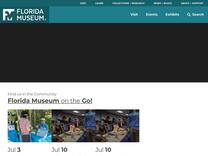Material Remains – Historical Archaeology https://www.floridamuseum.ufl.edu/histarch/research/haiti/en-bas-saline/material-remains/
The materials excavated from En Bas Saline are currently being curated and maintained on behalf of the Haitian government by the Florida Museum of Natural History, through a cooperative agreement between the University of Florida and the Bureau National D’Ethnologie D’Haiti. The agreement also incl
In precontact times, they captured and ate hutias – small, guinea pig-like rodents

